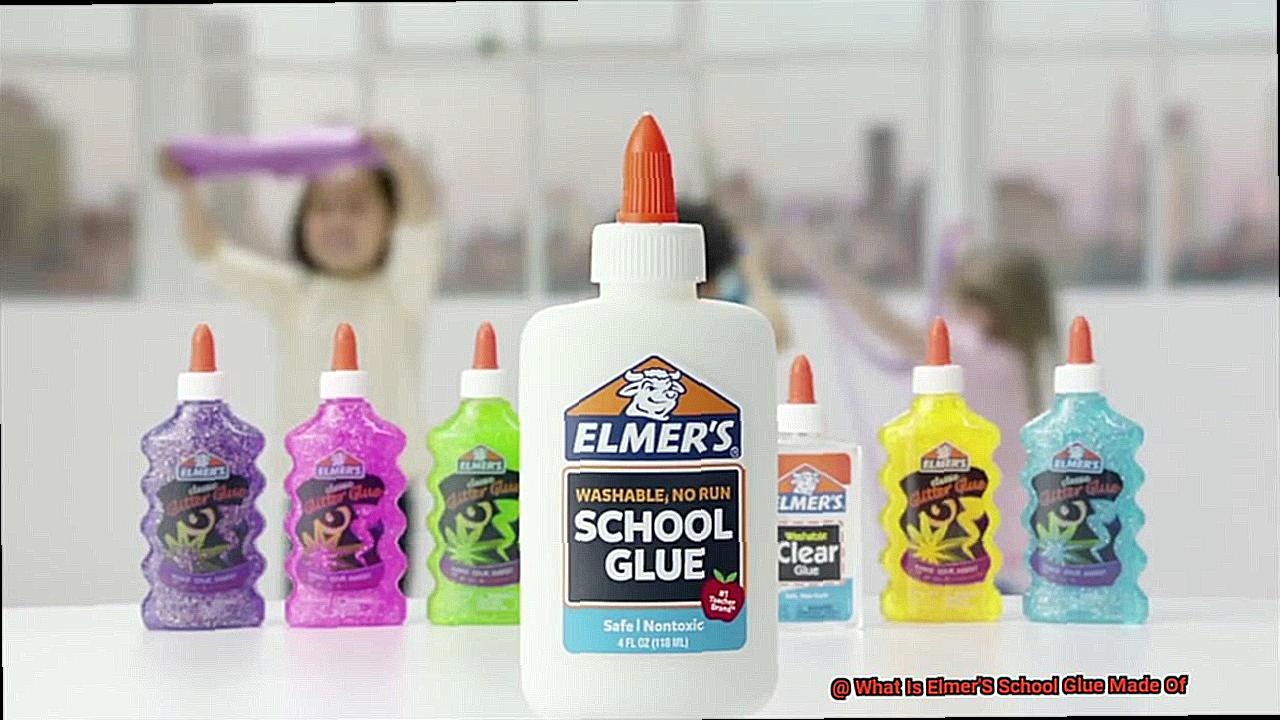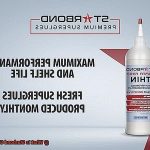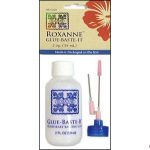Curious about the magic behind that iconic bottle of Elmer’s school glue?
Well, prepare to be amazed. In this blog post, we’re going to uncover the secret recipe that makes this adhesive so darn reliable.
For years, Elmer’s school glue has been the go-to for classrooms and crafters alike, thanks to its unrivaled stickiness and versatility. But what exactly is it made of?
Get ready for a wild ride as we unravel the mystery behind Elmer’s school glue and discover the powerful elements that make up this sticky sensation.
The Primary Ingredient in Elmer’s Glue
Contents
Elmer’s glue has been a staple in classrooms and craft rooms for generations, with its unrivaled ability to bond materials together. But what makes Elmer’s glue so special? Today, we will delve into the primary ingredient in Elmer’s glue and uncover the secrets behind its adhesive powers.
Polyvinyl Acetate (PVA): The Superstar of Elmer’s Glue
At the heart of Elmer’s glue lies its secret ingredient: polyvinyl acetate (PVA). This remarkable substance is derived from petroleum and natural gas through a process known as polymerization. PVA is a synthetic polymer that forms long chains of molecules. These molecular chains give PVA its flexibility and durability, making it an outstanding adhesive.
Water: The Trusty Sidekick
Water plays an essential role in the glue-making process. Acting as a solvent, water dissolves the PVA particles, allowing the glue to spread smoothly on surfaces. As the water evaporates, the PVA molecules intertwine, forming a strong bond between materials.
Thickeners: Keeping Things in Place
To ensure that Elmer’s glue stays where you want it to, thickeners like methyl cellulose or carboxymethyl cellulose are added to the formula. These thickeners control the viscosity of the glue, preventing it from dripping or running when applied. This feature gives you ample time to adjust your project before the glue sets.
Preservatives: Warding off Mold and Bacteria
No one wants moldy or bacteria-infested glue. That’s why Elmer’s includes preservatives such as sodium benzoate and methylparaben in their formula. These preservatives keep the glue fresh and usable for extended periods, protecting it from spoilage.
Titanium Dioxide: The Colorful Touch
Ever wondered why Elmer’s glue is so brilliantly white? That’s thanks to the addition of titanium dioxide, a white pigment. Not only does it give the glue its characteristic color, but it also enhances opacity, making the glue more visually appealing.
The Role of Water in the Glue Formula
Water is a superhero ingredient in the world of glue. It acts as a solvent, breaking down the solid components and transforming them into a liquid adhesive that can be easily applied to surfaces. Without water, glue would remain in a solid state and be virtually unusable.
But water’s role doesn’t stop there. It also makes the glue more spreadable and easier to use. By adding water to the formula, it gives the glue a fluid consistency, allowing it to effortlessly glide onto various materials. This is especially important when working with porous surfaces like paper, fabric, or wood, as the presence of water allows the glue to be absorbed more effectively.
As the water evaporates from the glue, it leaves behind a solid adhesive that forms a strong bond between the surfaces being glued together. Water not only helps with application but also contributes to the drying process, ensuring a secure bond.
Getting the right balance of water is crucial. Too much water can make the glue runny and weak, while too little water can make it thick and difficult to spread. The specific type of glue and its intended use will dictate the precise ratio of water to other ingredients in the formula.
Water-based glues like Elmer’s school glue have gained popularity for their non-toxic nature and ease of use. With water as one of its main ingredients, these glues are safe for children to handle and minimize any potential harm if accidentally ingested.
Enhancing the Adhesive Properties of the Glue
Today, we will embark on an exciting journey to discover the secret techniques and materials that can elevate the adhesive properties of Elmer’s school glue. Are you ready to unlock the potential of your crafting projects? Let’s dive in.
Supercharge with Additives and Chemicals:
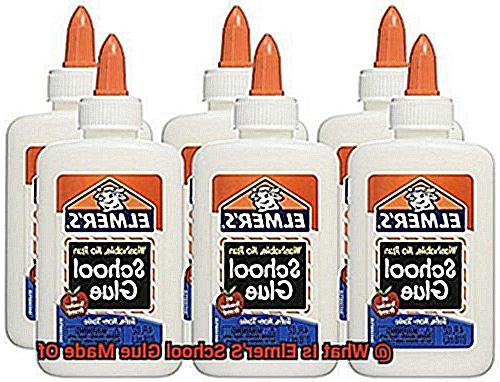
To give Elmer’s glue an extraordinary boost in adhesive strength, we can introduce additives like polyvinyl acetate (PVA). This synthetic polymer works wonders by enhancing bonding capabilities, turning your glue into a superhero with super strength.
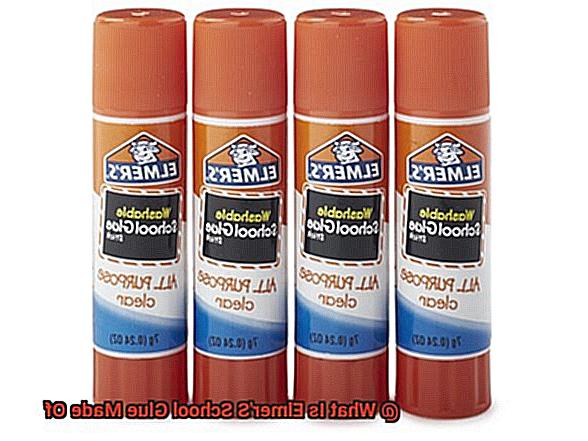
Viscosity: The Key to Success:
Imagine having a glue that spreads effortlessly and sticks like magic. By incorporating thickening agents such as cellulose derivatives or polymers, we can increase the viscosity of Elmer’s glue. This means better coverage and adhesion, especially on porous surfaces.
Tackifiers: Bond in the Blink of an Eye:
Say goodbye to waiting for hours for your project to dry. By adding tackifiers like rosin or hydrocarbon resins to the glue formula, we can enhance its initial stickiness or tack. These substances boost the cohesive forces between the glue and the surface, resulting in quick bonding and improved adhesion.
pH Modification: Unlocking Specialized Adhesion:
Elmer’s glue at neutral pH is great for general use, but what if we could optimize its adhesion on specific surfaces? By slightly adjusting the pH towards acidic or alkaline, we can achieve better bonding on materials like paper, cardboard, fabrics, or wood. It’s like customizing your glue for maximum effectiveness.
Mastering the Curing Process:
Don’t underestimate the power of proper drying. To ensure that your glue dries and bonds effectively, follow the recommended curing instructions provided by the manufacturer. Some glues require specific conditions like heat or moisture to achieve their maximum bond strength. Take control of the curing process and unleash the full potential of Elmer’s glue.
Preservatives Used in Elmer’s Glue
Today, we will unravel the secret behind Elmer’s glue and its powerful ally – preservatives.
Preservatives are the guardians of your glue, ensuring it remains fresh and safe for use. Imagine leaving your glue bottle untouched for months – without preservatives, mold and bacteria would have a wild party, leaving your glue less sticky and more disgusting.
One of the mighty preservatives used in Elmer’s glue is sodium benzoate. Fear not, it’s not as intimidating as it sounds. Sodium benzoate is a food-grade preservative that disrupts the metabolic processes of microorganisms. It stops them from multiplying and causing spoilage, like a superhero protecting your glue.
But wait, there’s another hero in the preservative squad – methylisothiazolinone (MIT). This synthetic compound possesses powerful antimicrobial properties, effectively thwarting the growth of bacteria and fungi. It’s like a superhero saving your glue from nasty invaders.
And that’s not all. Elmer’s glue may also contain small amounts of other preservatives such as potassium sorbate or phenoxyethanol. These additional preservatives join forces with sodium benzoate and MIT to provide extra protection against microbial contamination.
Now, I know what you’re thinking – are these preservatives safe? Absolutely. The concentrations of preservatives in Elmer’s glue are carefully regulated to ensure they don’t pose any health risks when used as intended. Elmer’s takes great care in selecting preservatives that meet safety standards set by regulatory authorities.
So, the next time you reach for that trusty bottle of Elmer’s glue for your crafting escapades, remember that its superpower lies in the carefully chosen preservatives. They work tirelessly behind the scenes, ensuring your glue stays fresh and ready to stick anything together.
Titanium Dioxide for Visual Appeal
The secret lies in the addition of titanium dioxide. This white pigment not only enhances the appearance of the glue but also plays a crucial role in its overall performance.
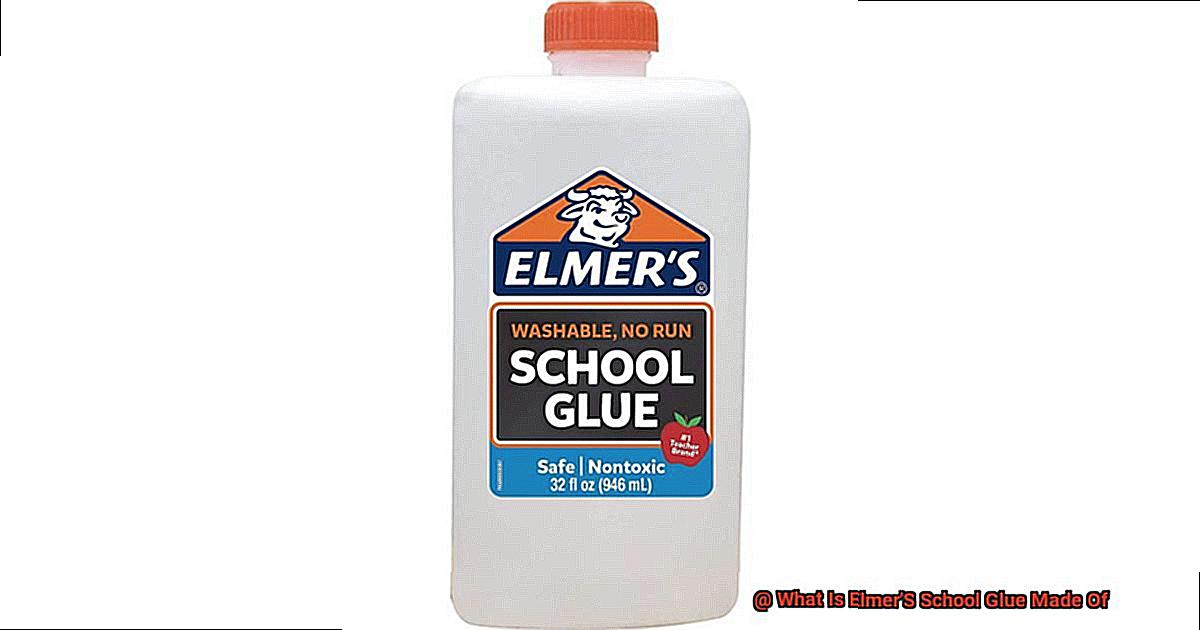
Firstly, titanium dioxide ensures that the glue is easy to see when applied. This compound creates a smooth and bright white appearance, making it visually appealing, especially for children who love vibrant colors. Plus, the bright white color helps kids easily identify where they have applied the glue on their projects.
But titanium dioxide does more than just add color. It provides opacity to the glue, creating a solid and opaque layer that is easily visible on various surfaces. No more guessing where you’ve applied the glue – with titanium dioxide, you can see exactly where it is.
Furthermore, titanium dioxide enhances brightness by reflecting and dispersing light effectively. This makes the glue appear brighter on paper or any other material you’re working with. The enhanced brightness not only adds visual appeal but also helps draw attention to the glued areas, making it easier for kids to see and work on their projects.
In addition to its visual appeal, titanium dioxide is known for its stability and resistance to discoloration when exposed to sunlight or UV radiation. This means that your Elmer’s school glue will maintain its bright white color and won’t yellow or fade over time. So even if your art project hangs on the classroom wall or gets a little sun exposure, your glue will stay looking fresh and vibrant.
Lastly, it’s important to note that titanium dioxide used in Elmer’s school glue is safe and non-toxic. It has been extensively tested and approved for use in various applications, including those involving direct contact with the skin. So parents can have peace of mind knowing that their children are using a high-quality adhesive product that is both safe and visually pleasing.
Is Elmer’s School Glue Non-Toxic?
When it comes to choosing the right glue for your school or home projects, safety is always a top priority. You want a glue that not only sticks things together effectively but is also non-toxic and safe for use, especially when children are involved. So, is Elmer’s School Glue non-toxic? Let’s dive into the research and find out.
Elmer’s School Glue is made from a combination of water, polyvinyl acetate (PVA) resin, and various additives. PVA resin is the primary ingredient, giving the glue its adhesive properties. Derived from petroleum, the PVA resin undergoes a rigorous chemical process to ensure it is safe for use.
In addition to water and PVA resin, Elmer’s School Glue may contain other additives such as preservatives, stabilizers, and colorants. These additional ingredients not only improve the glue’s shelf life but also enhance its performance.
To ensure safety, Elmer’s School Glue undergoes thorough testing to meet safety standards and regulations. It proudly carries certification as non-toxic by renowned organizations like the Art and Creative Materials Institute (ACMI). This certification guarantees users that the glue is safe for use both in schools and homes.
However, it’s vital to note that while Elmer’s School Glue is generally safe, caution should be exercised. Ingesting the glue or applying it directly to the skin should be avoided. In case of accidental ingestion or prolonged skin contact, seeking medical attention is recommended.
How Do the Ingredients Work Together?
Elmer’s School Glue is not just any ordinary adhesive; it is a powerhouse of ingredients that work together to create a bond that can stick almost anything together. So, how do these ingredients work in harmony to achieve such adhesive properties?
First and foremost, water takes the spotlight as the main ingredient in Elmer’s School Glue. Acting as a solvent, water dissolves the other ingredients and creates a smooth, liquid consistency that is easy to spread. It also serves as a carrier for the glue, allowing it to be applied onto surfaces seamlessly.
But water alone wouldn’t make for a strong adhesive. Enter polyvinyl acetate (PVA), the secret ingredient behind Elmer’s School Glue’s bonding power. PVA is a synthetic polymer that forms a robust bond when it dries. As the glue is applied onto a surface, the water within it begins to evaporate, causing the PVA molecules to come into contact with each other and form intermolecular bonds. This process, known as coalescence, sets the stage for a strong adhesive bond.
As the water continues to evaporate, the PVA molecules form a continuous film that adheres to both surfaces being glued together. This film acts as a bridge between the two surfaces, creating a bond that is flexible and durable. It can withstand the test of time, making Elmer’s School Glue perfect for various craft projects and everyday use.
But wait, there’s more. Elmer’s School Glue isn’t just water and PVA; it also contains a few additional ingredients that contribute to its exceptional performance. Preservatives are added to prevent microbial growth in the glue over time, ensuring its longevity on your shelf. Stabilizers help maintain the glue’s consistency, preventing it from separating or deteriorating. And thickeners give the glue its characteristic viscosity, making it easy to control during application.
zumPCy2wuKg” >
Conclusion
In conclusion, Elmer’s school glue is a true marvel of adhesive technology. Its secret weapon? Polyvinyl acetate (PVA), a remarkable substance derived from petroleum and natural gas. This magical ingredient forms long chains of molecules that give the glue its unbeatable flexibility and durability.
But PVA can’t do it alone. Water steps in as the trusty sidekick, acting as a solvent that dissolves the PVA particles and allows the glue to spread like butter on surfaces. As the water evaporates, those PVA molecules intertwine, creating an unbreakable bond between materials.
To keep things under control, thickeners like methyl cellulose or carboxymethyl cellulose are added to the mix. These heroes control the viscosity of the glue, preventing any messy drips or runs when you’re in the heat of crafting battle.
And let’s not forget about preservation. Sodium benzoate and methylparaben join forces to keep your glue fresh and usable for extended periods by warding off pesky mold and bacteria.
Oh, and did we mention titanium dioxide? This little gem is responsible for giving Elmer’s glue its dazzling white color and enhancing its opacity. It’s like having a mini spotlight on your crafts.
Water deserves another round of applause because it plays a crucial role in this formula. Not only does it act as a solvent, making the glue more spreadable and easier to use, but it also contributes to the drying process, ensuring a secure bond between surfaces.
Now armed with this knowledge of Elmer’s secret ingredients and their dynamic interactions, you can unleash your creative powers with confidence.

